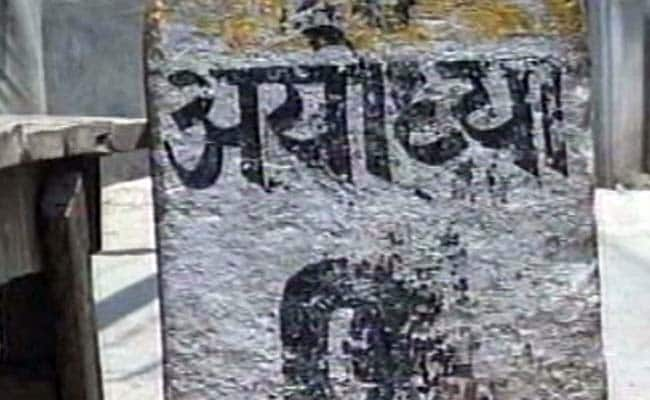
Nearly 70 years after the first court case was filed, Supreme Court has suggested that the dispute over the Babri Masjid-Ram Janambhoomi land was best resolved through negotiations and not a judicial verdict. The dispute that has dominated the country's political discourse has seen many twists and turns. The matter has been pending since 2010, when the top court stayed the verdict of the Allahabad High Court. The High Court had said Lord Ram was born under the central dome of the makeshift temple in Ayodhya and Hindus have the right to worship there.
Here are the Top 10 facts in this big story:
The Babri Masjid was built in Ayodhya in 1528. Hindu groups claim it was built after demolishing a temple. In 1853, the first recorded communal clashes over the site took place. In 1859, the British administration put a fence around the site marking separate areas of worship for Hindus and Muslims, and it stood that way for nearly 90 years.
For the first time, the property dispute went to court in 1949 after idols of Lord Ram were placed put inside the mosque.
In 1984, Hindu groups formed a committee to spearhead the construction of a Ram temple. Three years later, a district court ordered the gates of the mosque to be opened after almost five decades and allowed Hindus to worship inside the "disputed structure." A Babri Mosque Action Committee was formed by Muslim groups. In 1989, foundations of a temple were laid on land adjacent to the "disputed structure".
In 1990, the then BJP president LK Advani took out a cross-country rath yatra to garner support to build a Ram temple at the site. VHP volunteers partially damaged the Babri mosque.
On December 6, 1992, the mosque was demolished by Kar Sevaks. Communal riots across India followed. Ten days after the demolition, the Liberhan Commission was set to probe the incident. The Commission submitted its report on June 2009 - naming LK Advani, Atal Bihari Vajpayee and other BJP leaders -- almost 17 years after it began its inquiry.
In September 2003, a court ruled that seven Hindu leaders, including some prominent BJP leaders, should stand trial for inciting the destruction of the Babri Mosque. But no charges were brought against Mr Advani who was then the Deputy Prime Minister. But a year later, an Uttar Pradesh court ruled that the order which exonerated him should be reviewed.
On February 27 that year, at least 58 people were killed in Godhra, Gujarat, in an attack on a train believed to be carrying Hindu volunteers from Ayodhya. Riots followed in the state, in which over 1000 people were reported to have died.
In April 2002, a 3-judge Lucknow bench of the Allahabad High Court began hearings on determining who owned the site. In September 2010, the Allahabad High Court pronounced the verdict. The verdict said the site of Babri mosque is to be divided into three parts, each going to Nirmohi Akhara, Ram Lalla and the Sunni Central Waqf Board of Uttar Pradesh.. Within months, Hindu groups and Muslim groups moved Supreme Court challenging the High Court verdict.
In 2011, the Supreme Court stayed the Allahabad High Court order. Not long before, the top court had said the Allahabad High Court verdict was strange and surprising.
In its 2017 UP election manifesto, the BJP said it "will explore all possibilities within the purview of the Constitution to construct a Ram Mandir in Ayodhya". The BJP returned to power in UP after 15 years. Newly appointed Chief Minister Yogi Adityanath asked his officials to begin work on implementation of the poll promise.

